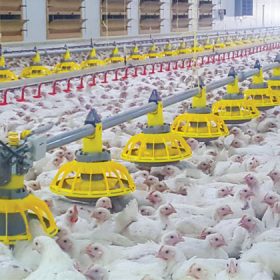FAD and Investment in On-Farm Poultry Carcass Disposal
Foreign animal diseases (FAD) can cause substantial economic losses in production, consumption, and the supply chain. These diseases are typically highly pathogenic and lead to disruptions in normal business practices and to demands for higher investment in biosecurity practices.

While preemptive planning is suggested, not all producers have an environmentally approved plan given disruptions in business continuity. This study estimated poultry producers’ willingness to pay (WTP) for on-farm carcass disposal methods for routine, non-catastrophic mortality during an FAD outbreak to understand what factors contribute to the investment decision. Poultry producers were surveyed about their operations’ characteristics, their disease perceptions, and were presented with a hypothetical disease scenario.
The estimated mean WTP for additional disposal capacity was $15,651. Besides indicating that a market for on-farm carcass disposal exists, our findings also provide information that can be used when creating policy to simultaneously incentivize farm-level biosecurity and carcass disposal protocols while continuing to encourage disease reporting, which together, improves overall livestock disease management in the United States.
Conclusions:
Using responses from an online survey from U.S. poultry producers, there is willingness to invest in on-farm carcass disposal capacity and producers are willing to pay $15,651 on average.
Current investment and adoption of on-farm carcass disposal capacity reduces the amount producers are willing to invest in additional capacity, as does ownership status and the producer’s personal FAD risk perception.
Biosecurity practices, including carcass disposal capacity and planning before, during, and after a livestock disease outbreak are important, and producers are willing to invest in them.










